What is it about rivers? The first time I set eyes on the Mekong was in Nong Khai, a provincial capital in Northeast Thailand. It was 1994 and the first bridge over the Mekong had just opened. From my riverside garden at Mutmee Guesthouse, I could look upriver and see it in the distance.
Across the river was Laos. It, like neighbouring Vietnam was in the process of reopening to tourism. A seven-day tourist visa cost US$100. I’d sit in the garden and gaze at the chocolate water swirling past. In the mornings, mist sometimes obscured both the river and Laos. I only knew it was there because I could hear the speedboats gunning their engines for their morning run. In late afternoon, as the sun set, the river turned to liquid gold and amber, sliding by enroute to the South China Sea.
From source to mouth, the Mekong stretches some 4,350 kilometres—the tenth longest river on earth. It comes into life with melting snow on the Tibetan Plateau, the source at an altitude of 4,650 m, at E 94º 18" 2' N 33º 34" 15' to be exact. By the time it bleeds into the South China Sea it has passed by China, Burma, Laos, Thailand, Cambodia and Vietnam. Along the way, it feeds some 70 million people.
Vietnam
Towards the end of 1994 I was in Vietnam. It was my first time in the country and travel was still very much rough and ready. With a bit of initiative you could do almost anything. And so, towards the end of the trip, I found myself in Mỹ Tho, a town that marks the beginning of the Mekong Delta.
Grazing in Mỹ Tho. Photo: Stuart McDonald.
Mỹ Tho sits on the north bank of the Mekong. A typical provincial capital, the town itself was no great shakes. My Canadian companion and I stayed at a dire hotel, but it looked right over the Mekong. With no real plans, we stayed for days. We’d sit on the shared third floor veranda, sink beers and watch the sun set, with the river right in front of us. It was pretty special.
One day, we walked down to the freighter pier—we’d found it on another day of random wandering, hidden behind a market. We enquired about getting on a boat. Between us we spoke about two words of Vietnamese and the captain didn’t speak a lick of English. There was a lot of pointing.
There was no bridge back then. Sunset at Mỹ Tho. Photo: Stuart McDonald.
We got the ride. It was my first time on the Mekong. The wooden freighter carried fresh produce, the lower deck strung with hammocks. We sat on the roof, among huge baskets of avocados and bananas and trundled up river.
In the late afternoon, the boat pulled to at a fish farm. Thousands of fish were in a netted off enclosure, floating on the river. Beside it a floating wooden platform had some chairs and a large wok filled with scalding oil.
The crew called us over, pointing. Their meaning was obvious—did we want a fish? Sure! With that, they netted two and without a blink of an eye threw them straight into the oil. It doesn’t get fresher than that.
Crossing the Mekong near Sa Đéc. Photo: Stuart McDonald.
Then is was back on the boat, between the baskets of fruit. The setting sun, some cold beers. Sublime. The towns slid by in the night. Vĩnh Long, Sa Đéc, Cao Lãnh—at the time I knew nothing of any of them. As time rolled on, I learned more—they’re all worth a night or three.
The trip from Mỹ Tho to Tân Châu, just shy of the Cambodian border, near Châu Đốc, took about 18 hours and cost us 25,000 dong each. Good value.
Cambodia
A decade or so later I found myself in Stung Treng, up by the Lao border in Cambodia. Much like Mỹ Tho, the town itself is nondescript. Most travellers only overnight if they must. Hanging around I met two Polish academics at the guesthouse bar. They were measuring sediment levels on river islands and, long story short, I went along for the ride.
Sunset across the Mekong and Tonle Sap, Phnom Penh. Photo: Stuart McDonald.
By this time I’d been living in Phnom Penh a year and save a sunset float of two, most of my river gazing was from terra firma. The Tonle Sap from Phnom Penh (Mekong in the distance) being the prime candidate. Kompong Cham and Kratie were also excellent towns for, well, sitting by the water. Before the bridge went in, the ferry crossing at Neak Loeung was always memorable.
The trip with the Poles was interesting (I’ve written about it in more detail here, short version, they were a bit mad). I hadn’t thought much about other islands in the river. Yet here we were, on a boat going from island to island, some deserted, others with small villages on them. The Poles were convinced the islands were inching upriver and each one we hit they’d hike in to take soil samples.
Island hopping, Stung Treng. Photo: Stuart McDonald.
The hamlets sustained themselves with fishing—and a little farming. Life was simple, and slow. As with the Delta, the river was the provider. It brought the fish they caught and the sediment they farmed on.
Laos
Further upriver, in Laos, the river came into its own.
Si Phan Don, the gaggle of islands before the waters slid into Cambodia was a backpacker hub. Two islands, Don Dhet and Don Khon, supported a baffling number of bamboo and thatch huts. The main past time was smoking weed in a hammock and going for a pizza afterwards—Laos, in a way, this was not.
It stopped the French. Photo: Cindy Fan.
History tells a different tale. The rapids cradling the stoner islands defeated French attempts to find a navigable route to China. The holy grail of trade—or so they thought.
Writes Francis Garnier of a visit to the falls in the late 19th century:
“Over a width of two kilometres, as far as the eye can see, an abundant foaming mass of waters surges down—one would have said a furious sea was breaking on a thousand rocks. Facing us, very close, the water hit the rock on which we were sitting and made it tremble.”
I’ve stood, perhaps not on the same rock, but in the same area, and it is true, the earth trembles. After the lackadaisical downriver flow, this power and energy of the flow is humbling.
Sunrise can be good too. Champasak. Photo: Stuart McDonald.
Further upriver, at Champasak, a riverside town on the river’s west bank, the river reverts to gentle. Sliding by, a caramel chocolate expanse. All that gives away the power are the sampans—gliding or labouring depending on direction.
A short distance inland lies World Heritage Wat Phu. The oldest relics here date back to the fifth and sixth century. From outside the central shrine, with clear air, you can peer out, between the frangipani and see the Mekong. What did they make of it then I wonder.
Thailand
North again, on the Thai side, near Khong Chiam, lies Pha Taem National Park. Famous for its ancient cave paintings, you can climb atop the cliff and see the river, Laos beyond. A mist–free dawn here is beyond magical.
Go back down to ground level, where the Moon River pours out into the Mekong. A tourist attraction of sorts, the “two colour river”. Sit on a raft, scoff spiced Thai fare, and watch the colour of the Moon disappear into the Mekong.
A Mekong view from Pha Taem. Photo: David Luekens.
I’m a great fan of Northeast Thailand, for the people, food and Khmer monuments, but also for the river. That Phanom, a few hours further north, is a favourite for slowing down and watching it slide by. My favourite guesthouse, Niyana’s, run by a local teacher, is no more, but the temple is beautiful. Hire bicycles to ride along the river’s bank. When the waters are low, look for the throwaway farms—lettuce, cabbage and other leafy stuff. Fishermen everywhere. The river as a provider. Again.
Laos, again
Over the top of the northeast and back to Nong Khai, where I first saw the river. Years ago, I hitched onto a freighter from Luang Prabang to Vientiane. The trip took two and a bit days. We slept, one night in a guesthouse in Pak Lay, the second night on the riverbank. Sand is cold. The crew made a fire and we drank beers. In the morning, one of the other passengers, a British backpacker, ate the offerings off the prow of the boat. It was a bad idea.
A Mekong sunset, Vientiane style. Photo: Stuart McDonald.
Over those two days, we sat on the roof of the boat, telling tales and playing cards, all the while the scenery sliding by. The trip isn’t as spectacular as the northern leg, from Luang Prabang to Huay Xai, but it is special. I remember seeing locals, on both legs, panning for gold in the shallows, using mercury to bind it. In some ways, the Mekong isn’t only golden at sunset.
The approach to Luang Prabang from the north, takes your breath away. First, you pass Pak Ou, the cliff top cave temple jammed with Buddha images. Then, you round a bend and the first of Luang Prabang’s spires, glittering behind the palms, reveal. It’s a shame the boats no longer land at the base of the stairs to Wat Xieng Thong—the ideal way to arrive.
Racing the sunset, outside Pakbeng. Photo: Stuart McDonald.
North again, Pakbeng, Pak Tha—I’ve written about this trip and Pak Tha, at length elsewhere on Couchfish. In summary, if you can get off the boat, get off the boat.
One time in Huay Xai, we hired a speed boat and headed upriver to a village called Ban Nam Keung Kao. There were hot springs people said. Long story but we travelled by bullock cart, found locals floating lumber down a waterfall, and our guide caught a huge snake. I’m sure it ended up on the dinner table. Again, always get off the boat. The hot–springs, by the way, were a dud.
Keep on truckin. Freighter near Chiang Saen. Photo: Mark Ord.
Back on the Thai side. The ancient Thai outpost, Chiang Saen. Great places to stay, plenty of history and, of course, the river. Nearby, swing past the Golden Triangle (Sob Ruak), at the confluence of the Mekong and Ruak rivers.
While the passenger boats no longer run north, the determined can hitch a freighter ride to Xieng Kok from Ban Mom, a small village upriver from Sob Ruak, on the Lao side of the river. Try for one not loaded with buffalo.
I’ll finish in Xieng Kok, in far northwest Laos. In 2006 the village hit international headlines when American backpacker Ryan Chicovsky vanished. He was never seen again.
The river giveth and the river taketh.
Thanks to Couchfish reader Martyn for the idea for this post!
More Couchfish free reads:
The unending smallness of Java

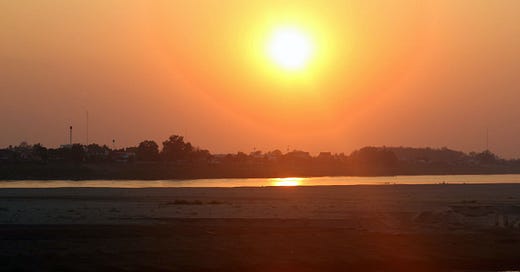


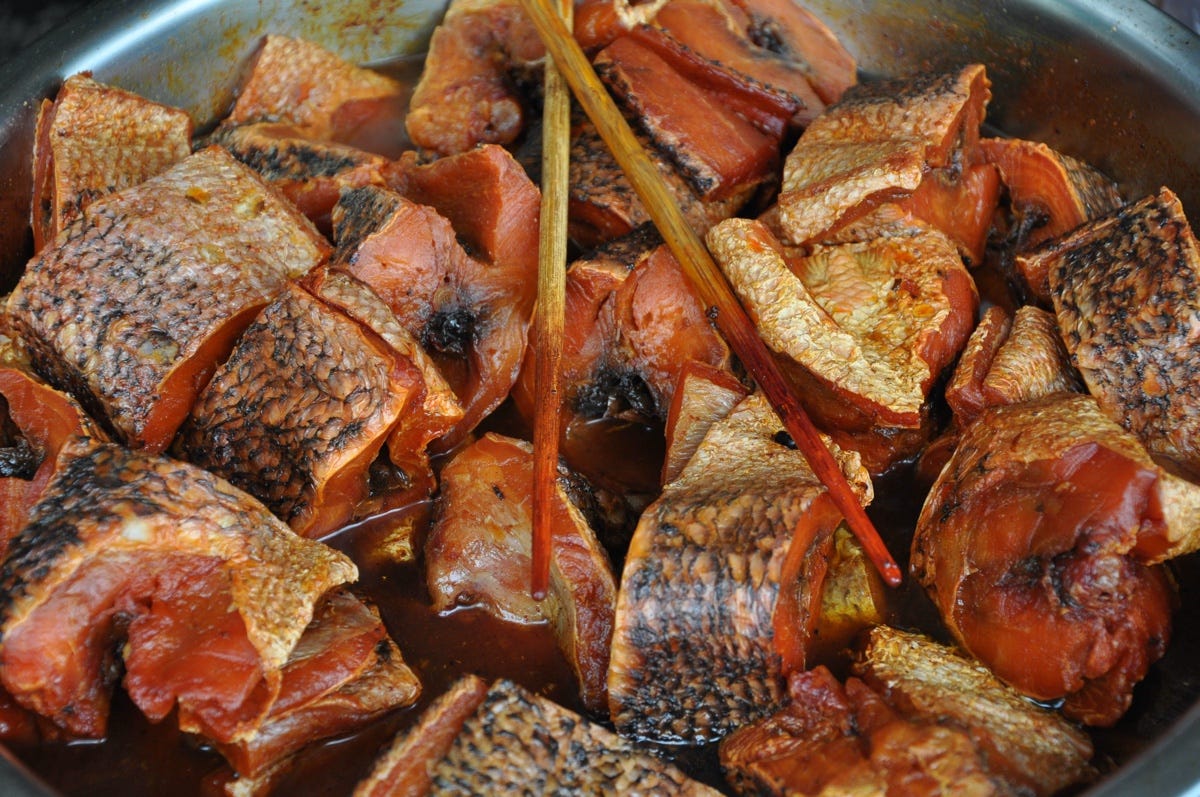
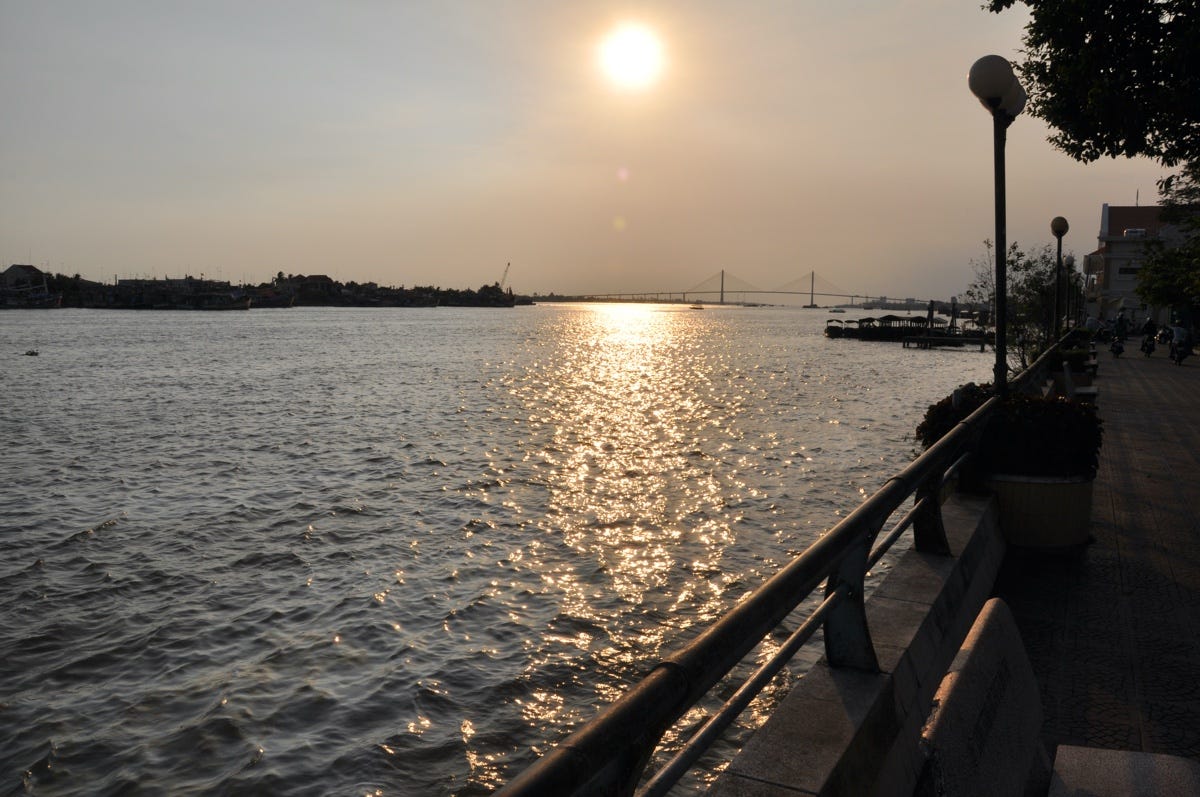
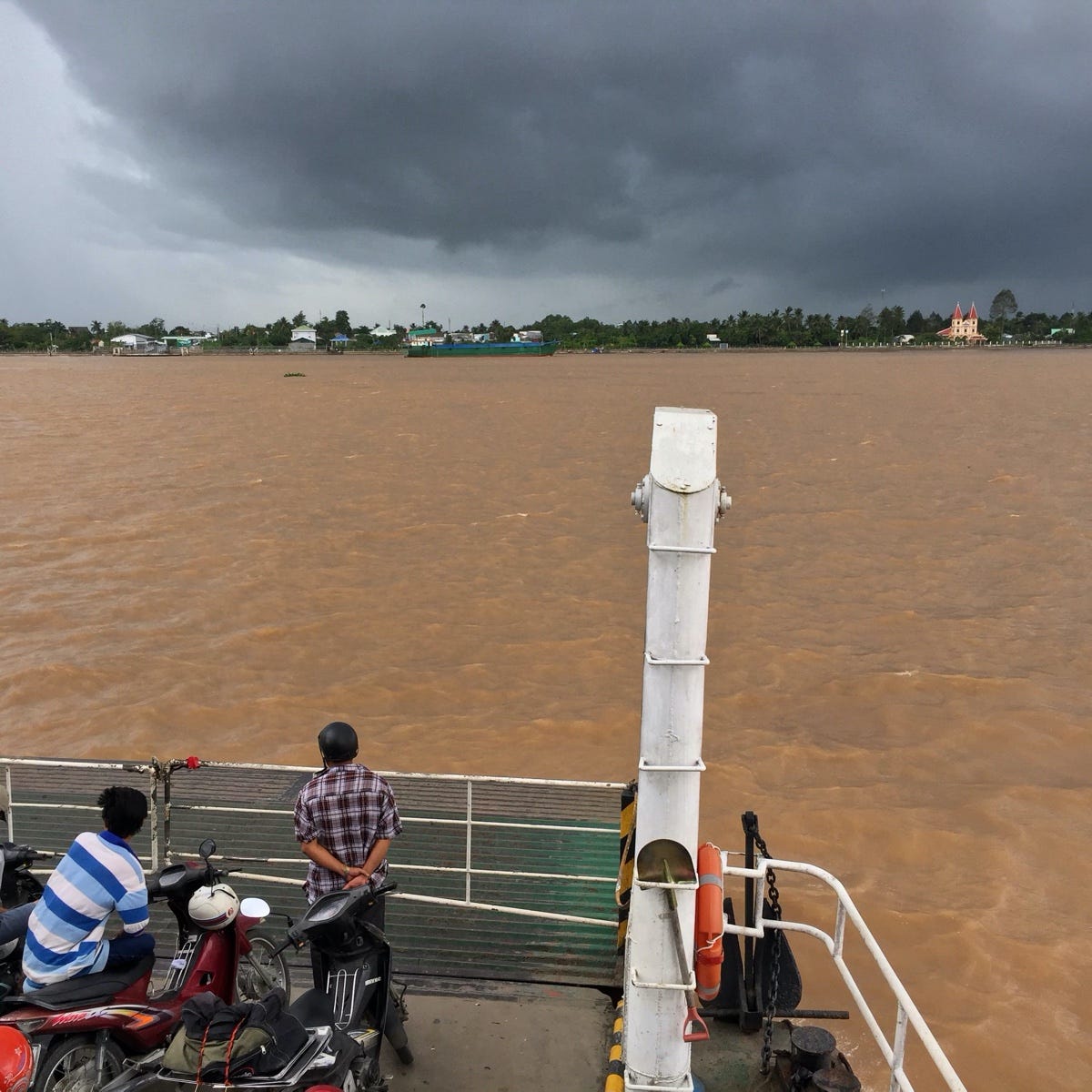

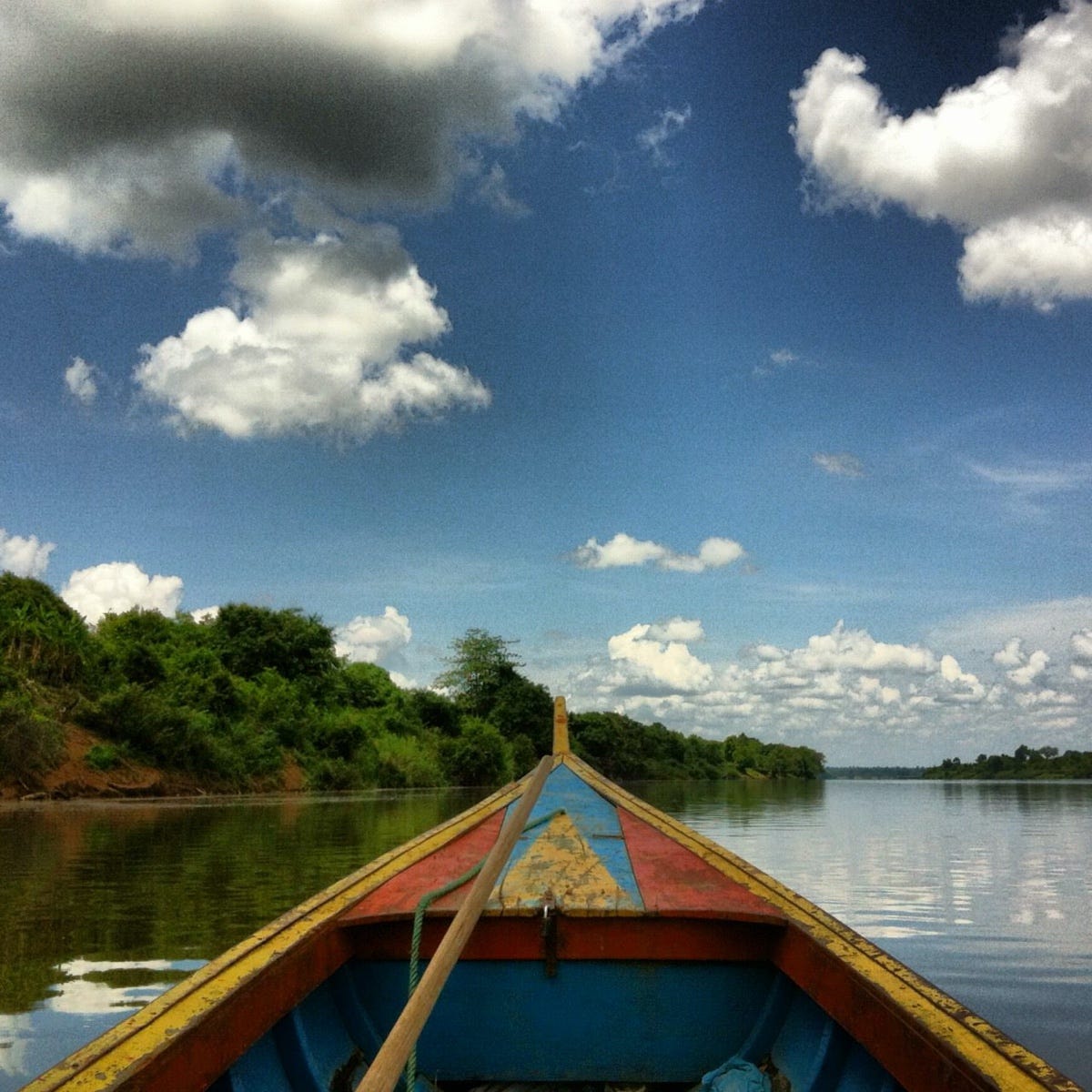

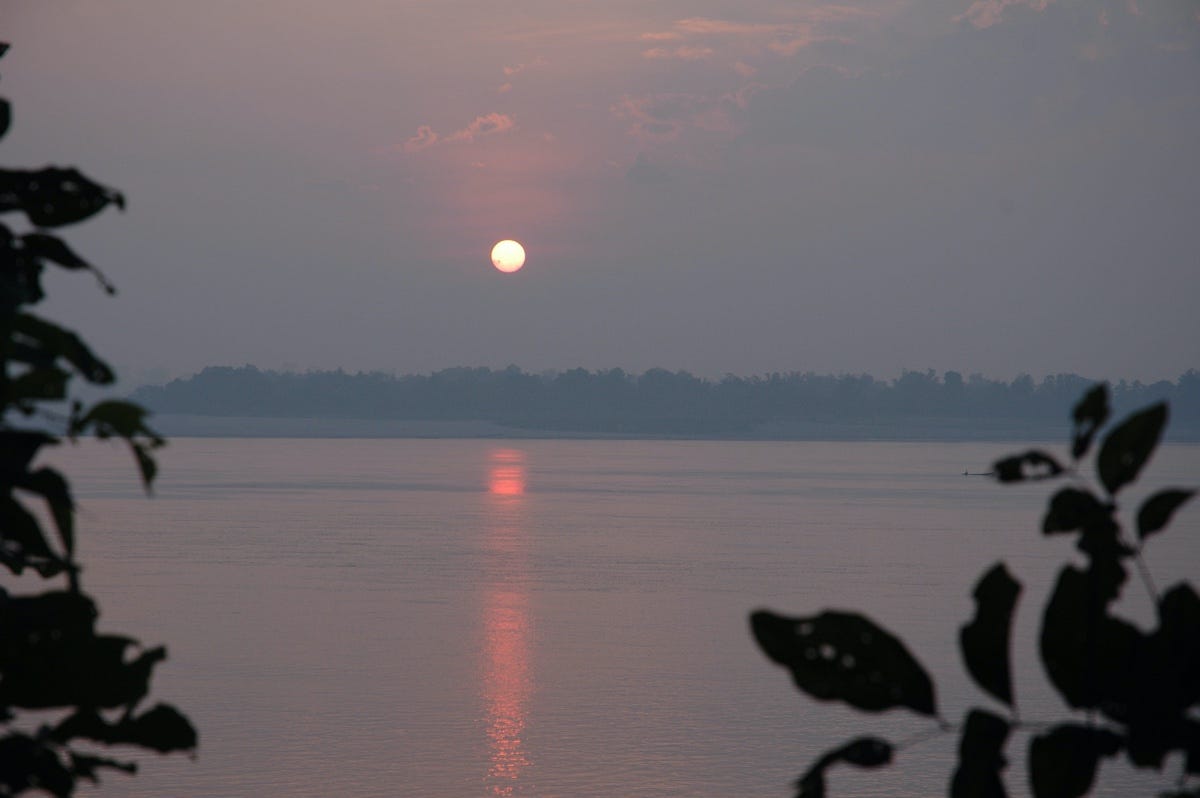
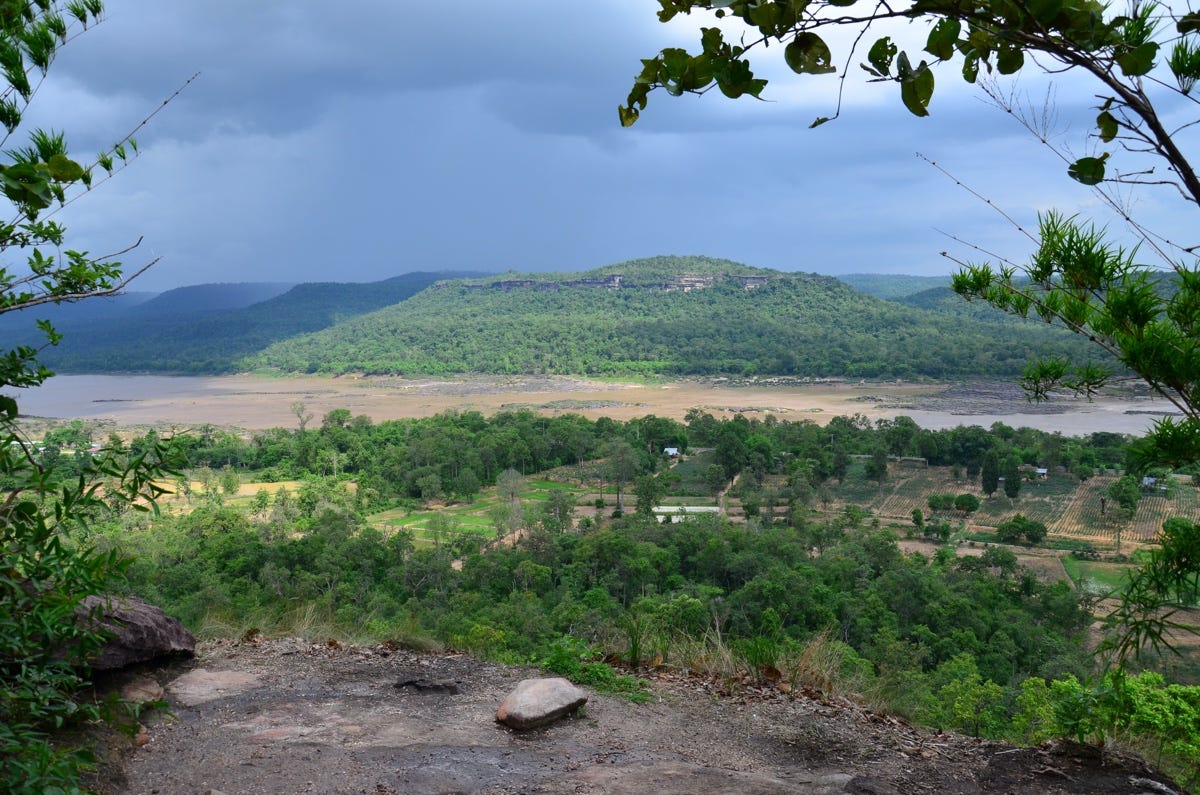

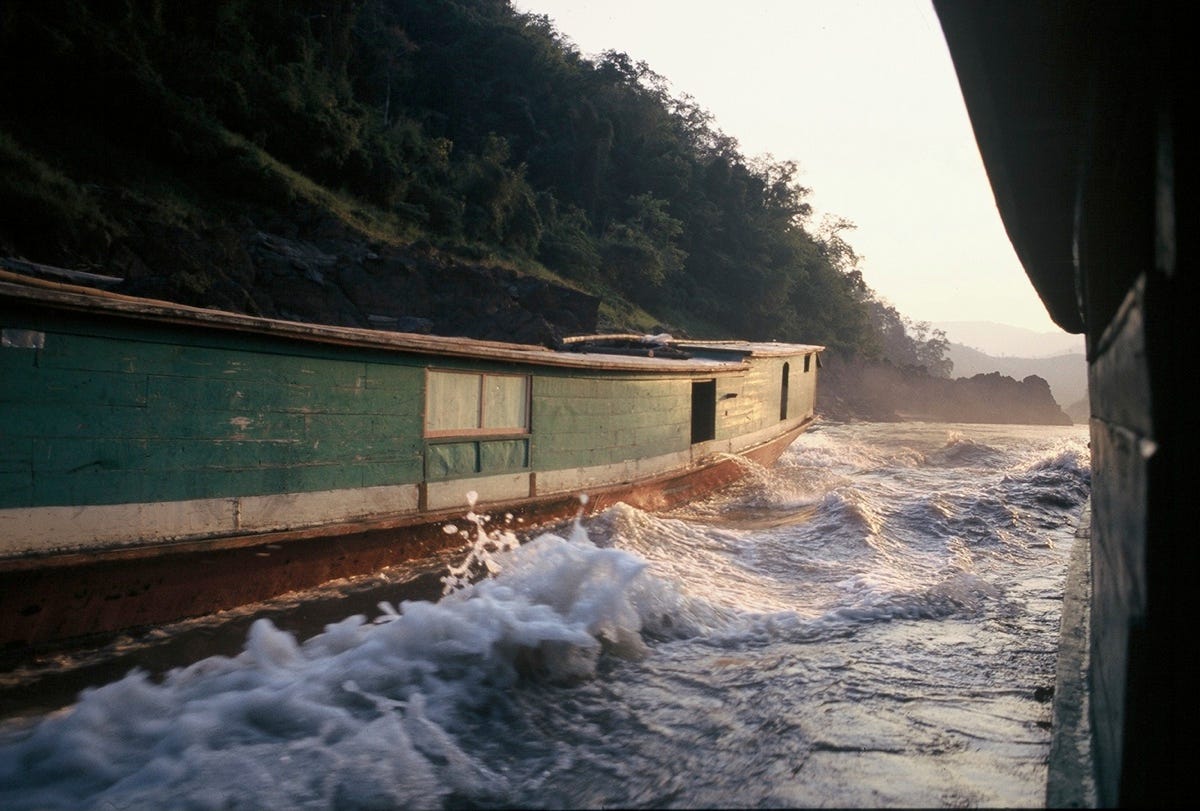










Share this post